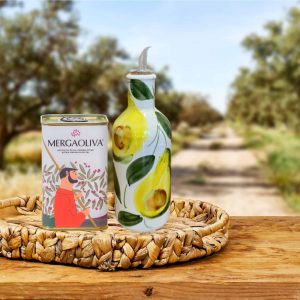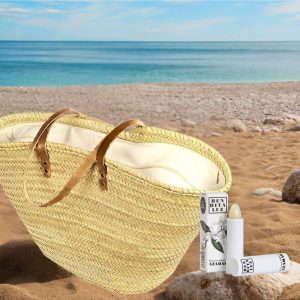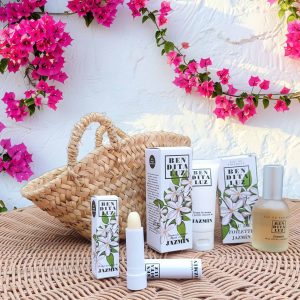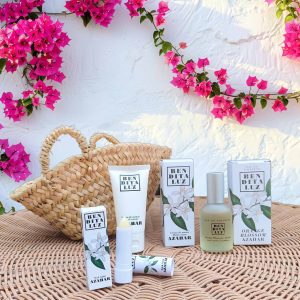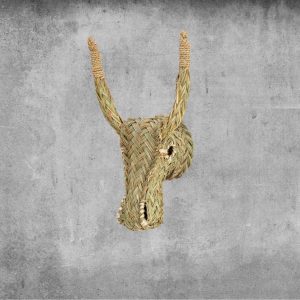Handicrafts
Showing all 12 results
What types of handicrafts are made in Andalusia?
Andalusia has a rich artisanal tradition encompassing a wide variety of manual trades. These crafts, which reflect centuries of history and cultural influences, are still alive in both rural and urban settings.
- Ceramics and pottery: widely produced in towns such as Úbeda, La Rambla, and Níjar, using techniques like glazing and hand-painting.
- Leatherwork: especially prominent in areas like Ubrique, known for its high-quality craftsmanship.
- Textiles and embroidery: including shawls, lace, jarapas (woven rugs), and traditional costumes, all handmade.
- Ironwork and metalcraft: decorative objects such as grilles, lanterns, and fittings crafted in wrought iron.
- Marquetry and woodwork: intricate inlays of fine woods, particularly common in Granada.
This diversity allows for the discovery of unique handicrafts with a strong regional identity.
What characterizes Andalusian crafts?
Andalusian craftsmanship stands out for its cultural identity and the wide range of traditional techniques. Many of these crafts have Arab, Roman, or Mudejar roots, which give them a distinctive aesthetic.
- Ornamental designs: featuring geometric, floral, or symbolic motifs with strong visual appeal.
- Use of natural materials: such as ceramic, esparto grass, wood, leather, or linen.
- Traditional manual techniques: passed down through generations.
The balance between functionality and beauty is another key feature, making these pieces both useful and decorative.
What is the most representative craft of Andalusia?
Although the region boasts many types of artisanal expressions, some are particularly emblematic due to their cultural significance and widespread presence.
- Ceramics: crafted using traditional glazing methods such as green and manganese finishes, or hand-painted tiles.
- Ubrique leather goods: renowned for their precision and quality in handmade production.
- Seville’s fans and shawls: iconic symbols of Andalusian style and tradition.
These handicrafts have gained international recognition and are considered cultural emblems of Andalusia.
Where can authentic Andalusian handicrafts be purchased?
There are many places where one can safely and reliably acquire genuine Andalusian handicrafts. Access to authentic products is available both in person and online.
- Artisan workshops: often located in traditional towns and neighborhoods.
- Craft fairs and markets: typically held during festivals or tourist seasons.
- Cultural centers or artisan associations: which often group together certified products.
There are also online platforms that showcase regional craftsmanship with verified origin.
How can you tell if an Andalusian craft is authentic?
To identify a genuine Andalusian craft item, it’s helpful to look for several key indicators that reveal its handmade nature.
- Unique finishes: slight imperfections that reflect artisanal rather than industrial production.
- Signatures or maker’s marks: some pieces are signed by the artisan.
- Traditional materials and techniques: use of local clays, natural dyes, fine woods, etc.
- Official certifications: such as the “Artesanía de Andalucía” seal issued by the regional government.
Buying directly from workshops or artisan collectives is also a good way to ensure authenticity.
What are good Andalusian handicrafts to give as gifts?
Handcrafted products from Andalusia make excellent gifts thanks to their originality and cultural value. There are options for a variety of tastes and occasions.
- Decorative ceramics: hand-painted plates, jugs, or tiles.
- Textiles: such as shawls, jarapas, scarves, or traditional wall hangings.
- Accessories: fans, handmade jewelry, leather bags, or silver filigree pieces.
- Wood or iron objects: marquetry boxes, picture frames, candle holders, or artisan keychains.
These gifts convey tradition and appreciation for craftsmanship rooted in Andalusian heritage.
What are the differences between the crafts of each Andalusian province?
Each Andalusian province has developed its own traditional handicrafts, shaped by geography, available materials, and local customs.
- Cádiz: known for leatherwork (Ubrique) and woolen fabrics from Grazalema.
- Granada: famous for marquetry and Nasrid-style ceramics.
- Córdoba: renowned for embossed leather and silver filigree.
- Jaén: specializes in esparto grass crafts, ceramics, and pottery.
- Málaga: notable for jarapas, ceramics, and woodwork.
- Almería: recognized for its rustic pottery (Níjar).
- Seville: celebrated for fans, shawls, and fine embroidery.
- Huelva: preserves traditional basket weaving and wood carving.
These regional distinctions enrich the overall variety of Andalusian craftsmanship.
Which Andalusian towns are most famous for their crafts?
Many towns across Andalusia are well known for preserving vibrant craft traditions. These locations are recognized for the authenticity and quality of their artisanal products.
- Ubrique (Cádiz): an international benchmark for fine leatherwork.
- Níjar (Almería): famous for its ceramics and woven textiles.
- Úbeda and La Rambla (Jaén and Córdoba): specialists in ceramics and pottery.
- Grazalema (Cádiz): known for traditional wool blankets.
- Guadix (Granada): a town with deep pottery roots.
- Priego de Córdoba: noted for embroidery and decorative ceramics.
- Aracena (Huelva): maintains a tradition of esparto and wicker basketry.
These towns combine landscape, heritage, and craftsmanship, forming an essential part of Andalusia’s cultural identity.

